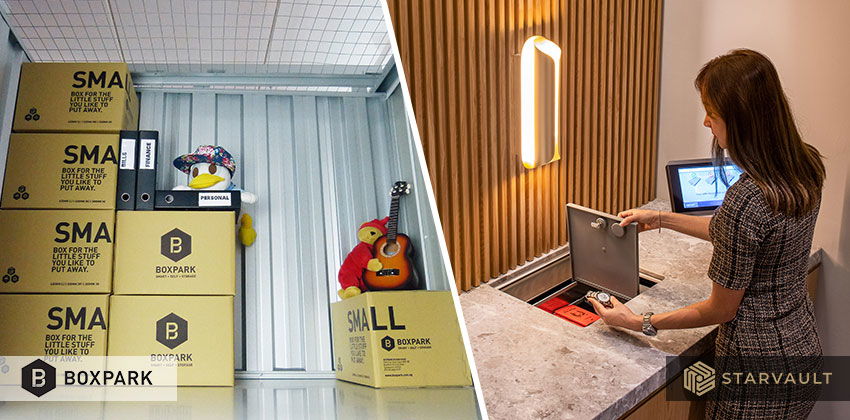Checklist for Moving Offices in Singapore [Free Download!]
In a fast-paced city like Singapore, things are always changing, and office locations are no exception. Businesses relocate their offices for a variety of reasons, including proximity to vendors with whom the company collaborates, proximity to clients, lower rent, or simply a better or larger office space.
When a company wants to move their offices, it becomes the task of an office manager, HR manager, facility manager, or operations manager to begin researching and planning for the office move. This comprehensive office relocation checklist is for companies in Singapore that intend to relocate to a new office space and want to know the must-dos before, during, and after moving.
Checklist for Moving Business Locations in Singapore

| Get Your Moving Business Location Checklist! |
1. Allocate Your Resources
Establish a moving committee
- Assign a project manager to coordinate planning, execution, and communication
- Appoint representatives from IT, HR, Finance, and Operations
- Define clear roles for each team member
- Hold regular meetings to track progress and address challenges
Develop a timeline
- Set critical dates for key milestones (lease signing, packing, move, first day)
- Set deadlines to order new equipment and update addresses
- Create a packing timetable to minimise disruption to daily operations
- Include a buffer period for unexpected delays
2. Set A Budget
Propose a budget
- Estimate the costs of moving services, new furniture/equipment, and renovations
- Include a 10-15% buffer for unexpected expenses
- Get the finance department’s approval for the budget
3. Recce Your New Space
Select the new office location
- Scout locations with easy access, parking, and client proximity
- Evaluate amenities, security, and potential for future expansion
- Consider changes to staff commute
Finalise the new office lease
- Review lease terms thoroughly (lease length, rent increases, maintenance obligations)
- Negotiate perks like tenant improvements and rent-free periods
- Get a real estate lawyer to evaluate the contract before anything is signed
Develop a detailed floor plan
- Work with an interior designer to create a design plan for your new office space
- Consider ergonomics and employee well-being (e.g. adjustable desks, break rooms)
4. Manage Your Inventory
Create an inventory
- Implement a clear labelling system (numbers or colours) for all items
- Create a master inventory list with item details and handling instructions
- Determine what should be moved, sold, donated, or disposed of
- Identify any leased equipment that should be returned or transferred
Plan for archiving/storing old documents
- Review the company's document retention policies and legal requirements
- Digitise documents to reduce your physical storage needs
- Develop a system for easy retrieval of archived materials
5. Manage Your Logistics
Hire professional movers
- Obtain quotes from at least three reputable movers
- Schedule site visits to both old and new offices for movers to assess the scope of work
- Check the moving insurance coverage of potential service providers
- Arrange for specialised movers for IT equipment or fragile items
Arrange for deep cleaning
- Schedule professional cleaning services for your old and new locations
- Plan for carpet cleaning or replacement if needed
- Ensure proper disposal of any hazardous materials
Coordinate with building management at both locations
- Arrange for the use of loading docks and freight elevators at both locations
- Get necessary parking permits for moving trucks
- Familiarise and comply with building regulations for move-in/move-out procedures
6. Manage Your Technology & Infrastructure
Plan for infrastructure
- Design layout and cooling for the new location's server room
- Design network infrastructure, including cabling and wireless access points
- Coordinate with telecom providers for phone and internet setup
Plan for technology upgrades
- Evaluate current software/hardware and plan for upgrades
- Consider implementing new systems (e.g. better video conferencing)
- Verify compatibility between new and existing equipment
- Create a checklist of systems and equipment to test after the move
7. Manage Your Operations & Security
Plan for business continuity
- Consider temporary remote work options for employees
- Plan for staggered moving to keep some operations running at all times
- Ensure employees can access important data and systems throughout the move
Develop a crisis management plan for moving day
- Identify potential risks (e.g. poor weather) on the official moving date
- Create contingency plans for each potential risk
- Prepare an emergency contact list that includes key staff and service providers
Arrange for security measures
- Coordinate with security at both locations to get building access on moving day
- Implement new security systems, including key cards, biometrics, etc.
- Update emergency evacuation plans for the new office space
8. Transition Employees & Vendors
Communicate with stakeholders
- Prepare email templates, FAQs, and updated documents on the office move
- Notify employees, clients, and vendors about the office relocation
- Arrange service setup (vending machines, plant care) at the new location
Update address online & offline
- Change address on legal documents, licenses, insurance policies, and notify government agencies
- Update company website, social media, and online business listings
- Order new business cards and stationery with updated information
Welcome employees
- Create welcome packets with new office info (floor plan, parking, nearby amenities)
- Arrange guided office tours
- Provide user guides and training on new equipment/systems
- Plan a welcome event or office warming party
- Gather feedback from employees to identify any issues
| Get Your Moving Business Location Checklist! |
Prepare For Your Office Relocation & Rent A Storage Space

When in the process of a big office move, the last thing you want to worry about is where to keep all the office equipment, current office furniture, and confidential documents. Make things easy by using BOXPARK and STARVAULT for your storage needs.
| BOXPARK | STARVAULT | |
| What is it? | Self-storage space with transparent pricing and 24/7 access. | Automated safe deposit box with transparent pricing and 24/7 access. |
| How long must I rent? | Contracts for as short as 7 days or as long as required. | Stay as short or as long as you wish with a minimum period of 1 month. |
| How secure is it? | Extremely secure with 24-hour CCTV, security guards, and an alarm in every storage unit. | Multiple security measures such as on-site security guard, biometric face scanning, fingerprint verification, & more. |
Cross one thing off your business relocation checklist by learning more about the self-storage space at BOXPARK and high-security storage at STARVAULT.


